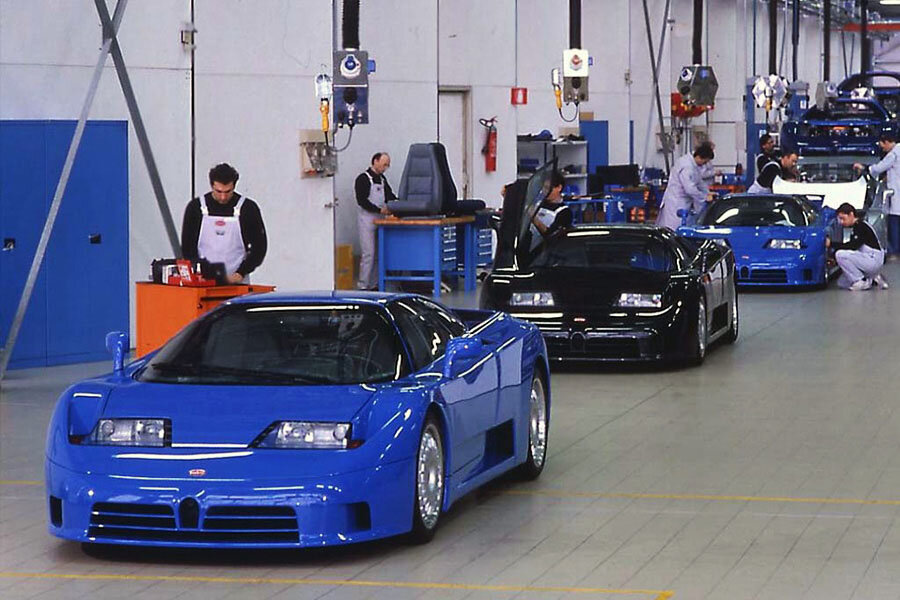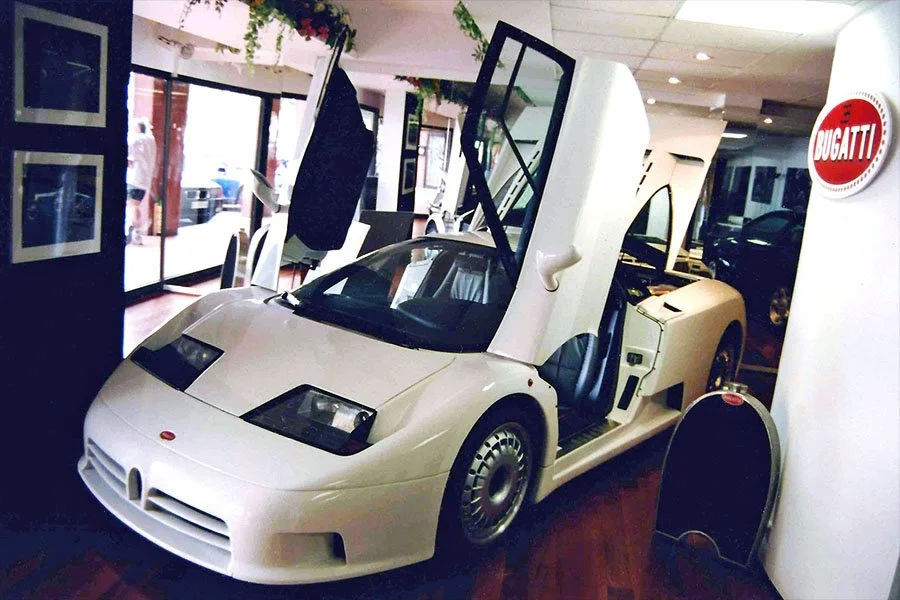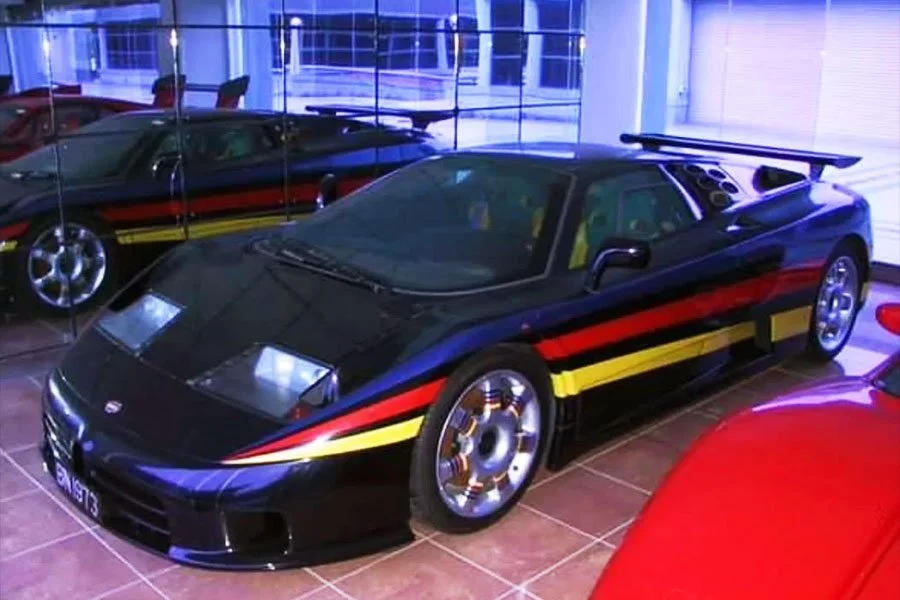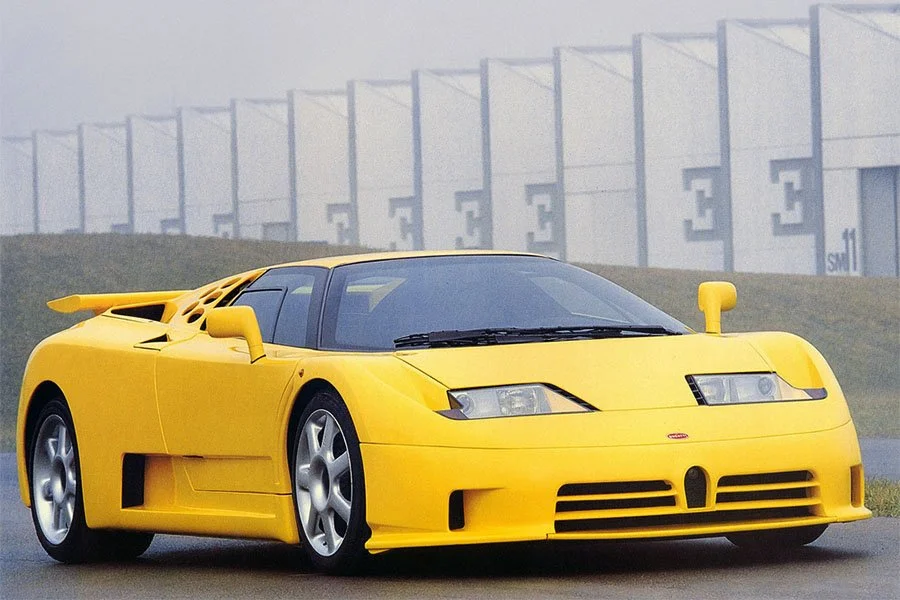Guide: Crazy Dream - a Historical & Technical Appraisal of the Bugatti EB110 GT
/BACKGROUND
Having last produced a motor car in 1952, the Bugatti brand was revived in the early 1990s by Romano Artioli, a wealthy Italian vehicle distributor who had acquired the naming rights to the famous French firm in 1987.
An all-new model was planned for 1989.
The proposed technical specification called for a DOHC V12 engine with five-valve cylinder heads, four turbochargers and at least 550bhp. Permanent four-wheel drive and a six-speed gearbox would also be employed in a package with a target weight of no more than 1300kg.
The new Bugatti operation was a lavishly funded operation from the outset. To build his new creation, Artioli constructed a beautiful state-of-the-art factory in Campogalliano, Italy.
Almost everything was fabricated in-house from scratch but delays meant the new EB110 GT wasn’t launched until September 15th 1991. By this time, the late 1980s supercar boom had been and gone. The stunning new car was instead pitched into a particularly severe global recession.
With its distinctive Gandini styling and near £300,000 list price, there just weren’t enough buyers for the EB110 GT and fewer still for the subsequent £400,000 SS variant.
Despite exceptional performance, superb build quality and razor sharp dynamics, the EB110 was a commercial disaster. The Campogalliano factory ultimately produced barely 100 customer cars before it closed in the summer of 1995.
CHASSIS
The EB110 GT incorporated bespoke parts throughout.
It was based around a hugely advanced and wickedly expensive carbonfibre tub designed by Aerospatiale (the French state-owned rocket, satellite and aircraft manufacturer). Fabrication of the tubs was handled by Composites Aquitaine.
During the early 1990s, the EB110 and McLaren F1 were the only proper road cars available with composite monocoques and it was this feature that played a major role in the enormous list price of both models.
Bugatti’s first five prototypes were completed with chassis fabricated from lightweight aluminium before they made the switch to carbon composite. Eight further prototypes were then completed. All had a wheelbase of 2550mm.
Suspension was via independent double wishbones with single spring / damper units per side at the front and two per side at the rear.
Power-assisted cross-drilled and ventilated 322mm brake discs were fitted all round along with four-piston Brembo calipers.
Power-assisted steering and switchable ABS were standard.
Unique BBS 18-inch diameter forged alloy wheels measured 9-inches wide at the front and 12.5-inches wide at the back. They were originally shod with custom Michelin tyres.
Flexible FIA fuel tanks were housed either side of the engine up against the rear bulkhead. Total fuel capacity was 120-litres.
The finished car had a 39:61 front-to-rear weight bias.
ENGINE / TRANSMISSION
The scratch-built dual overhead camshaft 60° V12 was mid-longitudinally mounted. It featured an unprecedented four IHI turbochargers which was more than any previous production car.
Predominantly fabricated from a mix of aluminium alloys and titanium, the engine displaced 3499cc thanks to a bore and stroke of 81mm and 56.6mm respectively.
Bugatti incorporated custom multi-point electronic engine management, dry-sump lubrication and heads with five valves per cylinder. At the time, a five valve configuration wasn’t even being proposed by McLaren although Ferrari did follow suit with the F355 in 1994.
Compression was set at a conservative 8.0:1.
The GT had a peak output of 553bhp at 8000rpm and 451lb-ft at 3750rpm.
Power was transmitted permanently to all four wheels by a six-speed manual gearbox, all-wheel-visco lock and rear-mounted limited-slip differential.
Torque distribution was 27:73 front to rear.
BODYWORK
Easily the EB110’s most controversial feature was its bodywork.
Styled by Marcello Gandini who had famously been responsible for Lamborghini’s Miura, Countach and Diablo, the shell used a mix of carbonfibre and aluminium panels that were bonded to the chassis.
Unfortunately, Gandini’s design failed to captivate in the same way as those aforementioned Lamborghini’s and the EB110′s awkward headlights gave the car a slightly bizarre appearance.
Other interesting details were Gandini’s trademark scissor doors, a glass engine cover and a huge speed-sensitive electronic rear wing that could also be raised manually. Cooling solutions could be found on practically every panel.
INTERIOR
Gandini’s rather sombre cabin featured electric seats trimmed in leather with ruffled bolsters.
Like the door trim and the top of the centre console, the seats were normally finished in a contrasting shade to the typically black, grey or blue leather-covered dash, three-spoke steering wheel and transmission tunnel sidewalls.
The instrument binnacle and centre console were given an incongruous walnut fascia. Directly behind the steering wheel was a 10,000rpm tach flanked to the right by a slightly smaller 400kph speedometer and to the left by a combined oil pressure / oil temperature / water temperature gauge. A fuel read out and clock were located at the top of the central control panel.
Although forward visibility was fine, rear vision was compromised and the cabin was cramped for those over six-feet tall.
Standard equipment included automatic climate control, electric windows, electric mirrors and electric seats. There were also electronic door releases, the buttons for which were located with the seat controls on a walnut insert alongside each outer bolster.
A set of custom fitted luggage could be stowed behind the seats.
WEIGHT / PERFORMANCE
Bugatti quoted a weight of 1560kg, a 0-62mph time of 4.4 seconds, a 0-100mph time of 9.1 seconds and a top speed of 210mph.
LAUNCH
The EB110 GT was unveiled at a lavish celebration in Versailles during September 1991. At the time, it was claimed to be the world’s fastest production car.
Road testers subsequently heaped praise on its performance and handling, particularly the car’s agility which was a surprise considering its relatively heavy weight.
PRODUCTION
The first customer EB110 GT was delivered in December 1992, but Bugatti had long since missed the boom years of their anticipated 1989 introduction.
Instead, the EB110 was launched into one of the most severe recessions for decades.
By 1995, demand for ultra expensive motorcars had almost completely diminished and only well established marques were able to see out the downturn.
Bugatti closed its doors in September 1995 and filed for bankruptcy in the Italian courts. By this time, they had completed 84 GTs (all of which were left-hand drive and some of which were retained for factory use).
Dauer EB110 S
An interesting footnote to the EB110 saga came in 1997 when trustees auctioned off Bugatti’s final stock of partially completed cars and parts. Almost everything was bought by Jochen Dauer.
Dauer purchased several unused Aerospatiale carbonfibre tubs, scores of other parts and four partially completed EB110s.
Dauer went on to complete ten of these cars in Germany between 1999 and 2002.
Text copyright: Supercar Nostalgia
Photo copyright: Bugatti - https://www.bugatti.com


































